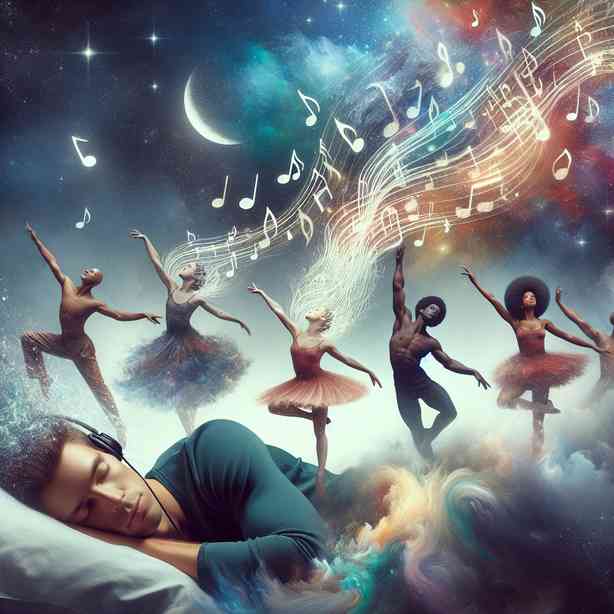
When you find yourself choreographing from a dream, it’s not merely an act of putting together dance movements; it’s an intricate process that merges the subconscious with the conscious, art with emotion, and creativity with physicality. Often, the creative impulses that arise in dreams can provide invaluable inspiration, leading to the creation of choreography that resonates on a deeper level. This journey from dream to dance is not just about replication of movements, but about channeling emotions and narratives that your subconscious has crafted while you sleep.
Firstly, let’s explore the essence of dreams in the context of creativity and choreography. Dreams have long been considered a window into our psyches, revealing our innermost thoughts, fears, and desires. For many artists, be it choreographers, painters, or writers, these nocturnal narratives can be sources of profound inspiration. When you wake from a dream, it’s common to feel a lingering sensation of the emotions that you experienced during that dream. These feelings can be powerful motivators as you begin to create a piece of choreography.
As you start to translate what you’ve dreamt into movement, it’s essential to take a moment to reflect on the emotional aspect of your dream. What feelings did you experience? Were there any specific symbols or images that stood out? Consider keeping a dream journal where you jot down your dreams immediately upon waking. This practice not only helps you capture the details before they fade away but also allows you to track recurring themes or motifs that might inspire choreography in the future.
Next, think about the physicality of the movements that emerged from your dreams. Often, these movements may not be traditional or structured. They could embody fluidity, spontaneity, or even chaos, reflecting the nature of dreams themselves. Dance is a form of expression that can communicate what words often cannot. Translating the essence of your dream into movement may involve improvisation and exploration of how your body reacts to the feelings and images sparked by your subconscious. Set aside time to move freely, allowing your body to dictate the choreography as you follow the impulses that arise from the dream state.
Once you have a sense of the movement vocabulary that your dreams have inspired, the next step is to begin structuring it into a cohesive piece. At this stage, think about the narrative you want to convey. What story do you want your audience to take away from your dance? The dream may have presented a linear story or a series of fragmented moments; either way, there is an opportunity to weave these elements together to create a compelling choreography.
Contrastingly, consider the context in which your choreography will be presented. Will you perform in a theater, at an outdoor festival, or within a more intimate setting? Each environment brings its own set of challenges and advantages, and it is essential to tailor your choreography accordingly. The space can influence how movements feel and how they are perceived by the audience. For instance, expansive movements may resonate differently in a larger space compared to a smaller, more intimate venue.
Additionally, don’t forget about the music that will accompany your choreography. The right soundtrack can amplify the emotional impact of your dance. Consider choosing music that reflects the mood of the dream or enhances the movements you’ve created. Alternatively, you could experiment with soundscapes or silence to draw attention to the physicality of the dance itself. The combination of movement and music can work synergistically to transport both the dancer and the audience into the narrative space you’ve created.
Rehearsal is key in bringing your choreographic vision to life. This is when you can refine movements, experiment with transitions, and ensure that the emotional essence of your dream is maintained throughout the piece. During this phase, allow for adjustments and be open to changes. As you physically execute the movements, you may discover new connections or sequences that resonate in ways you hadn’t previously anticipated.
Once you feel confident in your choreography, it is time to share your work with others. Performances can be nerve-wracking, yet they also provide incredible opportunities for connection and feedback. Audiences can interpret dance through their own perspectives, and the emotions they feel may mirror the ones you encountered in your dreams.
Lastly, after the performance, take time to reflect on the experience. What worked well? What would you do differently next time? Embrace the entire cycle of creation—from the initial dream to the final performance—utilizing each experience to refine your process as a choreographer.
In conclusion, choreographing from a dream is a unique and enriching experience that transcends the conventional boundaries of dance. It requires an openness to the subconscious, the willingness to explore emotions, and the creativity to transform fleeting moments of inspiration into a tangible art form. By harnessing the power of your dreams, you can create choreography that not only tells a story but also resonates deeply with those who witness it, leaving a lasting impression that lingers long after the final bow. Engaging in this artistic endeavor not only enhances your skills as a choreographer but also broadens your understanding of the profound connection between our dreams and our creative expressions. Remember, each dance you create is a step on the path of a continuously evolving journey, where dreams are just the beginning of what your imagination can unfurl.


